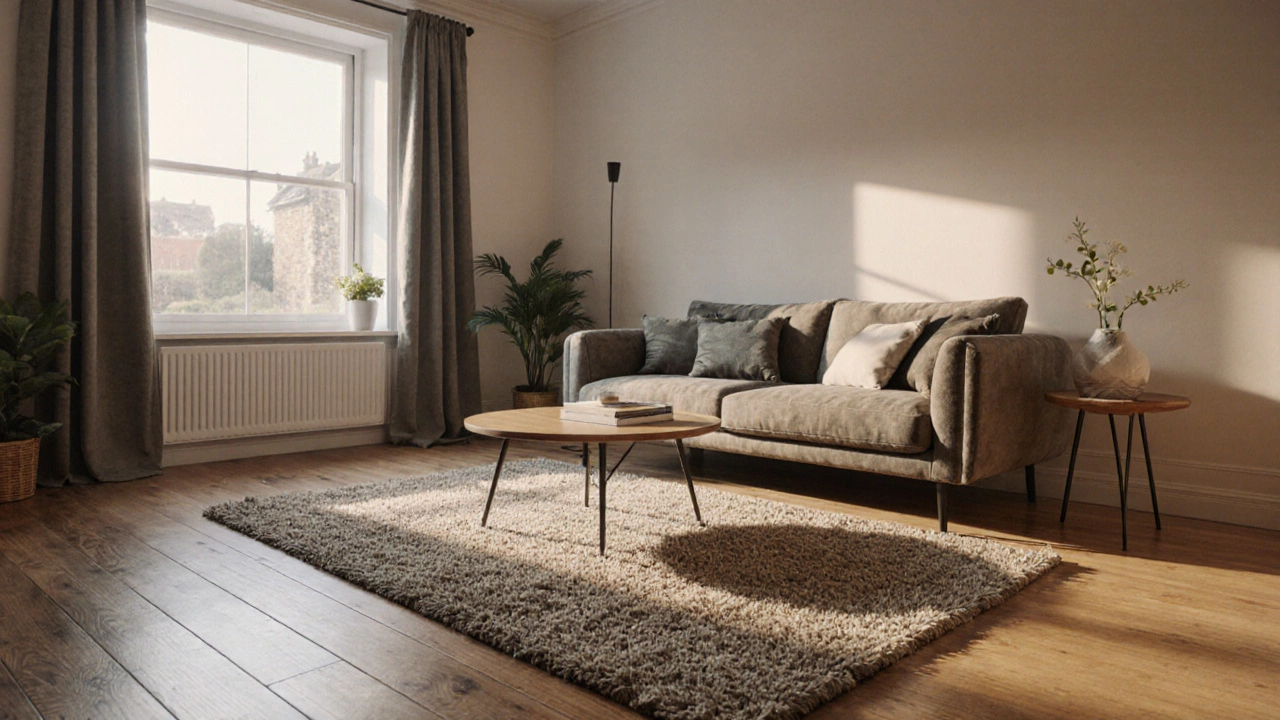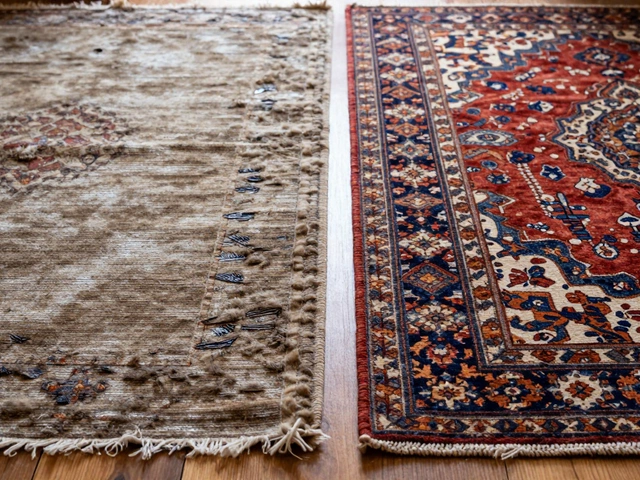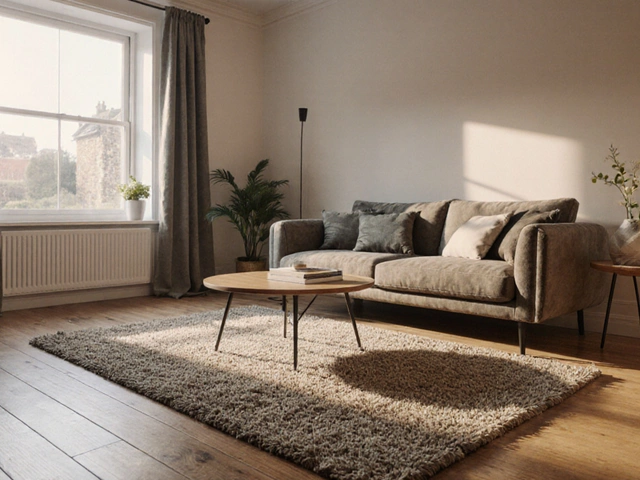Ever walked into a room and felt something was missing, even though the furniture looked perfect? Chances are the floor needed a popular rug types boost. Rugs are the silent heroes of home decor - they tie colors together, soften hard surfaces, and add personality without a paintbrush.
What Exactly Is a Rug?
Rug is a floor covering, typically smaller than wall-to-wall carpet, used for decorative or functional purposes. Unlike full‑room carpet, a rug can be moved, layered, and swapped out as trends shift or seasons change.
How Rugs Are Categorised
Before we dive into the crowd‑pleasers, it helps to know the basic ways experts sort rugs. The most common lenses are:
- Material - wool, synthetic fibers, cotton, jute, etc.
- Construction - hand‑knotted, hand‑tufted, machine‑made, flatweave.
- Design style - modern, traditional, tribal, geometric.
- Pile height - low‑pile, high‑pile (like shag), or flat.
Each axis influences feel, durability, price, and where the rug works best.
The Four Rug Types Dominating 2025
Based on sales data from major retailers, interior‑design surveys, and trend‑watch platforms, four categories consistently top the charts. Let’s break down why they’re winning over homeowners worldwide.
Wool rug
Wool remains the gold standard for high‑traffic areas. It’s naturally flame‑retardant, breathable, and resurfaces its fibers when walked on, which means the rug looks freshly cleaned without extra effort. In colder climates like New Zealand’s South Island, wool also adds a cozy insulation layer.
Synthetic rug
Advances in polymer technology have made polyester, nylon, and polypropylene rugs look and feel surprisingly luxurious. They’re stain‑resistant, budget‑friendly, and ideal for families with kids or pets. Modern synthetic rugs now mimic the texture of natural fibers, so you get the look without the upkeep.
Flatweave rug
Flatweave rugs are lightweight, easy to roll, and perfect for layering. Their low pile makes them great for dining rooms where chairs need to slide under them, or for entryways that get a lot of foot traffic. Because they’re often woven from cotton or jute, they bring a relaxed, boho vibe.
Shag rug
The fluffy, high‑pile shag rug made a comeback in the early 2020s and is still riding the wave in 2025. It adds tactile comfort to living rooms and bedrooms, turning a plain floor into a plush sanctuary. Modern shag rugs use a blend of synthetic and natural fibers to keep the feel soft while improving durability.
Why These Four Types Beat the Rest
In short, they hit the sweet spot of aesthetics, performance, and price. Here’s a quick rundown of the key drivers:
- Versatility - From minimalist lofts to traditional cottages, each type can be styled to match.
- Maintenance - Wool rinses out dirt, synthetics repel spills, flatweaves are easy to shake out, and shag rugs now come with low‑maintenance blends.
- Availability - Mass‑production of synthetic and flatweave rugs means they’re on‑hand in most stores, while artisanal wool and shag pieces are plentiful online.
- Price buckets - You can find a decent synthetic rug for under $50, a quality wool rug for $200‑$800, a stylish flatweave for $80‑$300, and a premium shag for $150‑$600.
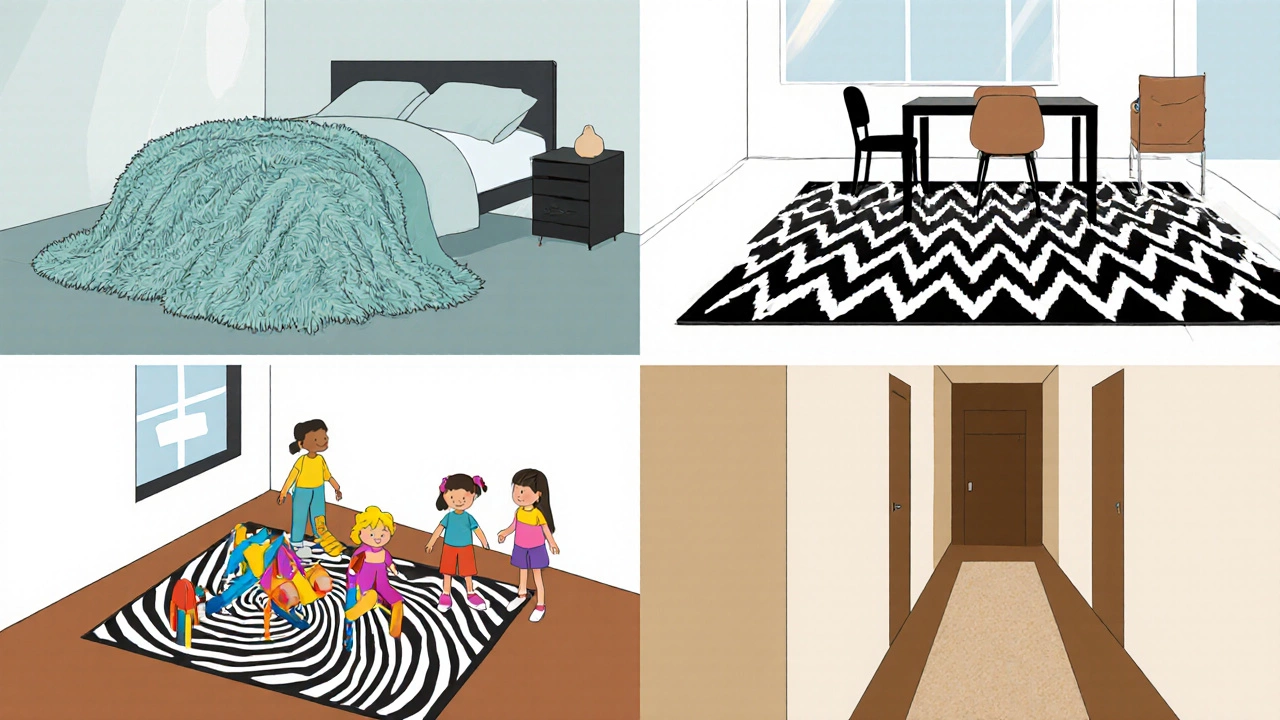
Comparison Table: Top Rug Types
| Rug Type | Primary Material | Durability | Feel & Texture | Best For | Typical Price Range (USD) |
|---|---|---|---|---|---|
| Wool | Natural wool fibers | High - resists crushing, self‑cleaning | Soft, slightly springy | Living rooms, hallways, cold climates | $200 - $800 |
| Synthetic | Polyester / Nylon / Polypropylene | Very high - stain & moisture resistant | Varies - can be plush or flat | Kids’ rooms, pet areas, budget projects | $50 - $300 |
| Flatweave | Cotton, jute, hemp blends | Medium - easy to replace | Low‑pile, smooth | Dining rooms, entryways, layered looks | $80 - $300 |
| Shag | Blend of synthetic & natural fibers | Medium‑high - modern blends improve wear resistance | Very plush, high‑pile | Bedrooms, cozy lounges, modern aesthetics | $150 - $600 |
Choosing the Right Rug for Your Space
Even with the four top contenders, you still need a decision framework. Here’s a quick cheat‑sheet you can print out:
- Room traffic: High‑traffic zones (hallways, kitchens) benefit from synthetic or wool.
- Footwear style: If you often wear shoes inside, low‑pile flatweave or synthetic won’t trap dirt.
- Comfort vs. practicality: Want soft feet? Go shag or wool. Need spill‑proof? Choose synthetic.
- Style palette: Modern neutral rooms pair well with flatweave geometric patterns. Traditional décor shines with wool or Persian‑style rugs.
- Budget: Set a max spend, then filter by type. You’ll still get a quality piece in every category.
Care & Maintenance Tips
Keeping a rug looking fresh extends its life and saves money. Here are the basics for each popular type:
- Wool: Vacuum on a low‑setting, rotate every six months, spot‑clean with mild detergent and a damp cloth. Avoid harsh chemicals - they can break down natural fibers.
- Synthetic: Most stains come out with a quick spray of water and a gentle rub. For deeper cleaning, a machine‑washable rug can be tossed in the washer on a gentle cycle.
- Flatweave: Shake outdoors, then brush with a soft broom. If it gets wet, air‑dry flat to prevent mildew.
- Shag: Use a suction‑only vacuum or a rug‑specific brush head to avoid pulling fibers. Professional cleaning once a year keeps the pile from matting.
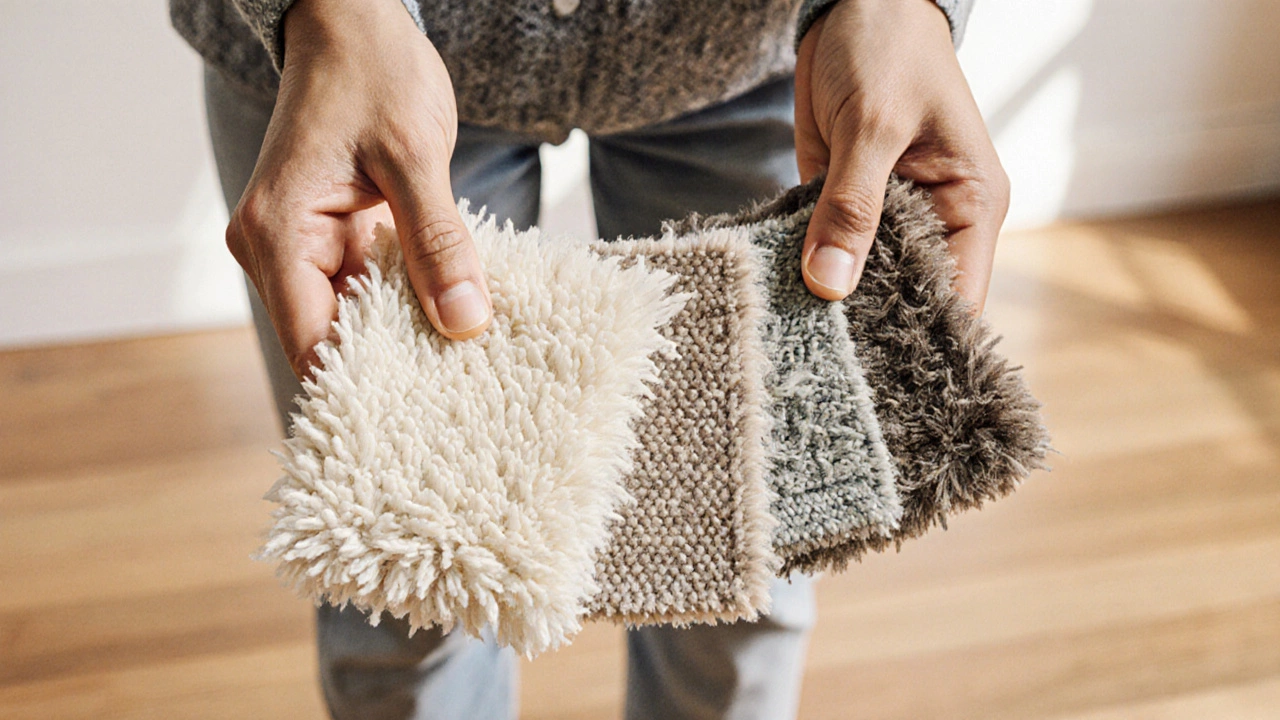
Buying Checklist - Don’t Forget These Details
- Measure the area accurately; leave at least 18‑24 inches of floor exposed on all sides for balance.
- Check the rug’s backing - non‑slip pads prevent accidents, especially on hardwood.
- Read the return policy; many online sellers offer a 30‑day trial.
- Consider eco‑labels; wool is renewable, and many synthetic rugs now use recycled polyester.
- Match the rug’s edge style (serrated, beaded, or plain) to your décor theme.
Frequently Asked Questions
Which rug type is best for pets?
Synthetic rugs, especially those made from polypropylene, resist stains and are easy to clean. Look for low‑pile designs so pet hair doesn’t get trapped.
Do wool rugs need professional cleaning?
Not necessarily. Regular vacuuming and spot‑cleaning keep a wool rug fresh. However, a deep clean once a year by a professional can restore its original luster.
Can I layer a flatweave rug over a shag rug?
Yes, layering works well as long as the base rug is thin enough not to create a tripping hazard. The flatweave adds visual contrast while the shag provides comfort.
What size rug should I choose for a 10‑foot sofa?
A common rule is to pick a rug that extends at least 18 inches beyond the front legs of the sofa. For a 10‑foot sofa, a 9‑by‑12‑foot rug usually hits the sweet spot.
Are there hypoallergenic rug options?
Natural fibers like jute, hemp, and wool are naturally hypoallergenic if kept clean. For a fully synthetic route, look for rugs labeled anti‑allergen or made from recycled polyester.
Wrap‑Up: Your Next Rug Move
Now that you know the four rug categories that dominate 2025, you can pick the one that checks your boxes for style, durability, and budget. Remember: a rug isn’t just a floor cover; it’s a mood‑setter, a comfort zone, and a quick way to upgrade any space. Grab a sample, test the feel underfoot, and let your floor do the talking.
